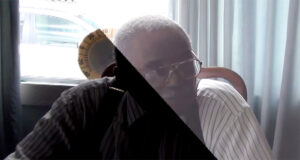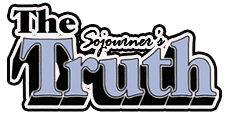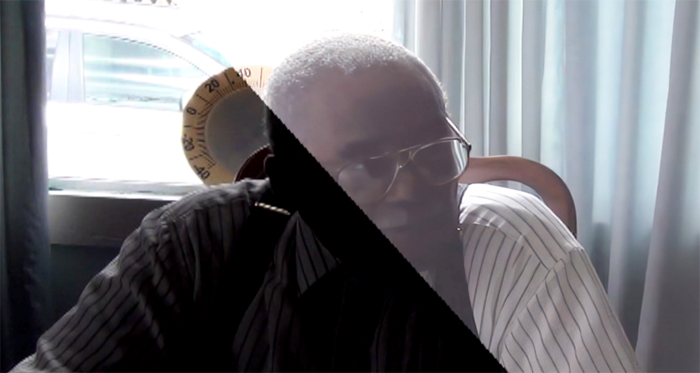 By Colette Córdova and Daniel Mason
By Colette Córdova and Daniel Mason
Special to The Truth
History Forgotten and Now for All to See, a documentary about the rural Great Migration African American Community of Braceville, Ohio, is a captivating documentary that unveils the rich tapestry of Braceville, a “Small Town with Big History.” This remarkable town is the birthplace of numerous notable figures, who have left an indelible mark on the world.
Colette Córdova, of Toledo, met Daniel Mason, of the Cleveland area, a film editor and technical director of the film, while working on a political campaign and began working on projects that promote advocacy, especially for people of color, including this documentary.
“I was amazed at all of the work that goes on behind the scenes and the countless hours needed to perfect a film.” said Colette Córdova, vice president of the ALAS, Escuela Smart Advisory School Board. “Given the times we are in now, it’s more important than ever for oppressed populations to get our history out there. Both the Latinx and African American communities have been marginalized for too long.”
Mason feels at the core of the film is a question: “How did this community, who escaped from the Jim Crow south—some of them fleeing with nothing in the middle of the night—end up producing so many notable sons and daughters? What was is about this particular community that led them to live the American Dream, where so many other communities ‘set aside’ for people of color were actively prevented from reaching their potential? How did a small community of maybe 90 families even at its peak, sitting in a flood zone in the countryside of Ohio—improbably produce multiple millionaires, an Olympian, hall of fame boxers, a member of Jackie Robinson’s All Stars, state track and field record-holders, filmmakers, and many other notables? And, maybe even more importantly, how is it that they are all just about the nicest people you have ever met?”
Mason’s main challenge for the film was taking archival home video interviews, and restoring them to the point where they were presentable. “The footage was in multiple less common older formats—but more importantly was an issue that has been a problem with imaging for decades: The technologies for autofocus and auto exposure, so common on older consumer cameras, were not tested or developed with people of color in mind,” Mason said.
“We had one interview in particular with a pillar of the community, Daniel Shavers, and it was shot near a window. The auto exposure feature decided to properly expose everything outside the window behind him. We could barely make out his face, and a lot of people thought that this critical footage was unusable. But, with Colette and the film’s director, Ron Hughes (along with help from fellow filmmaker Jessie Bryant), we were able to apply both traditional filmmaking color correction techniques—as well as some cutting-edge software techniques, including utilizing artificial intelligence software, to restore his facial features—and even upscale the old footage to 4K.”
Mason continued, “I know some people are rightfully weary of AI in film—and elsewhere—but when you are trying to help marginalized people’s voices be heard—and the historical record is often by the nature of said marginalization scant—I think any tool that can help is worth using. The History Channel might be able to employ hundreds of historical actors, dressed up as Spartans or Civil War era soldiers- and add computer animation to bring lost eras to life. But smaller productions, less influenced by the commercial model, will now be able to cover more perspectives; let more people’s voices be heard. I see way too many ‘documentaries’ trying to imply that aliens built the Great Pyramids or Incan Temples, and yes, they are trying to make stories that sell. Most of us know that these stories also have a hidden implication: that people of color could never have made these great architectural monuments- that their civilizations could not have been advanced enough, etc.. While it might make you click on a show on a streaming service, and these fantastical ideas might be entertaining to imagine, there is a larger impact. Now we have the opportunity to tell ‘stories’ on a grander scale, to show how epic even just being a homesteader, railroad worker, or nurse was.”
Mason added, “As Howard Zinn’s, A People’s History of the United States, and the new era of research it and subsequent work it inspired shows us, there is so much more to learn about how people actually lived from primary sources and from a ‘bottom u’” approach, rather than a “top down” history of “Great (usually white) Men”—history as we have traditionally been taught it. I am hoping that these techniques and some emerging software will allow me and many others to tell stories, to share the wisdom that would otherwise be lost. Every neighborhood, often every generation, has multiple stories worth telling. My Godfather, Josh Pais, directed a wonderful film called ‘7th Street,’ about growing up on the lower East Side of Manhattan.
“There are stories and characters everywhere. We only have to think back to our childhoods, and of all the individuals who left a mark on our memory, helped us form our values and who we are. Most of us have not gone back and interviewed our parents, neighbors, friends—at least not formally. But there is so much there. Lifetimes of accumulated experience, wisdom—and often humor. I encourage everyone to take out their phone (with permission and ideally a heads up, of course), and document the stories of their elders and other interesting people you may know. Sometimes they are not comfortable on camera, but most people will at least let you record a voice memo—you most certainly know people who like to tell stories, and our memories of these stories years later are often sadly lacking. It’s something I cherish having done with my mother, and others.”
Mason then went on to discuss implications and potentials of these new ways of storytelling: “This experience, and some other elements of my life and career, have led me to really focus on the possibility of assisting people all over as to how to record and preserve local histories. Here in Braceville, we have been discussing creating a template for schools and integrating family oral history projects with existing core curriculum standards—as well as preserving archival footage to be viewed in its entirety. These stories need not be one unedited shot of your abuelito (though that is quite important to have a copy of if possible, properly backed up in “the cloud”), but could include cutaways to photographs and even AI recreations of historical events (or just be integrated with existing copyright free footage, if possible; not as needed for personal or educational use, but you never know where your story may lead or how many people may want to watch it if you post it online). The cost of enhancing and expanding these stories to the scale of a History Channel production like America: The Story of Us just a few years ago would have been quite prohibitive.”
“Now we can inspire the next generation with ‘the epic’ personal histories of their family, their experiences, and how their families formed their values—became who they now are. That is essential, especially in a world where a new wave of revisionist history is trying to take hold in our country. It’s our responsibility to document these histories before they are lost, as we know other won’t—they’ll probably aim for the opposite. It’s perhaps almost equally as important to tell our audience when and how something is manipulated (AI or otherwise), and a good practice to provide access to the original sources of everything, for historical purposes.”
“Here at the Braceville African American Heritage Museum we are looking into (and ideally seeking additional funding and volunteers for assisting in) telling more stories, and especially aiming to support others in doing so. Over the next year or so we are looking into creating a studio where families and school children can gather to record or enhance family and local histories. We hope to offer educational programs both in-person at the museum, in schools, and online. At the same time, we are hoping this helps with the revitalization of the town, affected by the closing of the steel mills. We hope emerging artists and historians might be drawn to this project and some other key initiatives. With a focus on what made Braceville unique (and generally considered an fairly ideal place to grow up), and an understanding of its history and values, we hope that in time some people may wish to stay and raise the next generation, keeping the ‘Braceville Spirit’ alive.”
“We have the expertise, access to the proper hardware and software, and much more to provide these services and attract people, including interns from Kent State and Youngstown State, each only about 20 minutes away. Most people have at least one uncle or cousin who is really ‘into’ genealogy or family history. I encourage everyone reading this to reach out to us at bcf@bracevilleplatt.org (or come talk to us in person at the film screening!) and let us know of your interest. We want to preserve these voices for future generations—and ideally preserve them in a way that inspires the younger generations to not just pretend they are listening, smile and say, ‘Sí, Abuelito’—and then proceed to just stare back down at their phones, connecting with neither their past or even their present—let alone process how these connect to and inform their own, unwritten future…”
History Forgotten and Now for All to See will be showing at Robins Theater, 160 E Market St, Warren, Ohio on February 16, 2025 at 2:00 PM; the doors open at 1 PM. Tickets are $10 and available online: https://www.etix.com/ticket/p/68772723/history-forgotten-the-story-of-bracevilleohio-warren-robins-theatre

